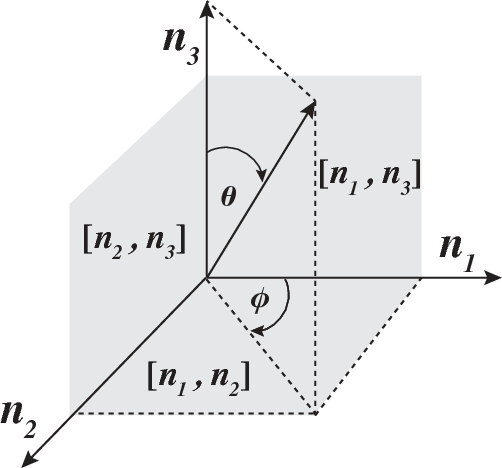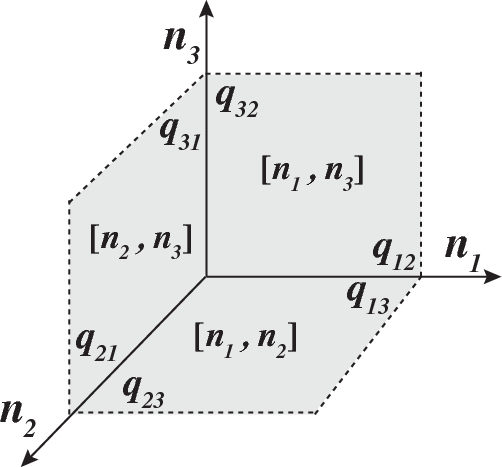|
|
|
|
On anelliptic approximations for qP velocities in TI and orthorhombic media |
In the preceding section, we suggested an improvement to the anelliptic approximations for VTI media previously proposed by Fomel (2004). Applying a similar modification to the extended Muir and Dellinger approximations (equations 41 and 43), we can write the resultant approximations in a new form suitable for approximation of velocities in orthorhombic media, as follows:
 |
(46) |
 |
(48) |
Figure 3b shows the locations of the fitting indices in each symmetry plane. Note that the subscript rule explained earlier still applies, and the relationship
![]() still holds. In our notation,
still holds. In our notation, ![]() and
and ![]() represent weighted averages of anelliptic parameters (
represent weighted averages of anelliptic parameters (![]() and
and ![]() ) in a plane whereas
) in a plane whereas ![]() and
and ![]() represent weighted averages at an axis.
represent weighted averages at an axis.


|
|---|
|
coordinate,fittingnotation
Figure 3. a) Parametization rule for working coordinates. b) Locations of fitting indices |
|
|
Similar to the derivation in the TI case, ![]() and
and ![]() can be found by fitting the curvatures to the exact velocities along orthogonal directions in each of the three planes. Likewise,
can be found by fitting the curvatures to the exact velocities along orthogonal directions in each of the three planes. Likewise, ![]() and
and ![]() can be found by fitting the fourth-order derivative (
can be found by fitting the fourth-order derivative (
![]() and
and
![]() ) at the same positions. Note that the expressions of
) at the same positions. Note that the expressions of
![]() , and
, and ![]() are similar to those in the TI case for
are similar to those in the TI case for
![]() , and
, and ![]() for
for ![]() . As a result, we need to specify parameter expressions only for the other two planes. Fitting both phase- and group-velocity expressions along both axes in each symmetry plane leads to six different expressions for each of the fitting parameters. This is different for the case of extended Muir-Dellinger approximations (equations 41 and 43) where only three expressions are allowed.
. As a result, we need to specify parameter expressions only for the other two planes. Fitting both phase- and group-velocity expressions along both axes in each symmetry plane leads to six different expressions for each of the fitting parameters. This is different for the case of extended Muir-Dellinger approximations (equations 41 and 43) where only three expressions are allowed.
Since the Christoffel equation in the three symmetry planes is similar to that in TI media, the functional forms of every parameter expression remain the same. Therefore, we can compute parameters needed by equations 45 and 47 using the formulas derived in [![]() ,
,![]() ] plane for the TI case. Thus, we obtain:
] plane for the TI case. Thus, we obtain:
|
|
|
|
On anelliptic approximations for qP velocities in TI and orthorhombic media |